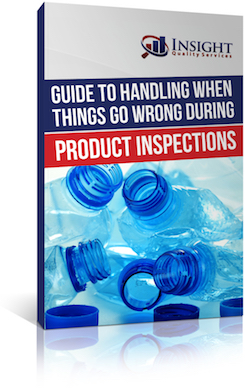Do you conduct more than two dozen third-party inspections per year with each of your manufacturers?
If so, you’re sitting on a gold mine of data that can help you manage your QC budget more effectively.
How so?
Every time you conduct an inspection, you get an inspection report — and perhaps you use it to decide whether or not to accept a shipment or to determine if your factory needs to take some corrective action. But then what?
What do you do with that inspection report after your order ships?
Do you file it away in an often-forgotten folder on your desktop? Do you toss it in the trash as if it were a single-use paper coffee cup?
Hold on a second!
The data in that report can still be useful if you just keep track of it and aggregate it over time. You can use it to help you manage supplier relationships more effectively and maximize your quality spend.
In this article, we’ll talk about how to do that. First, we’ll talk about what you should be tracking.
Table of Contents
Which Inspection Report Data Should You Track?
For every inspection you conduct, you should at least keep track of the following data points. You can put them into an excel sheet or — if you are an Insight customer — we can provide this data for you:
- Factory Name
- Inspection Date
- Inspection Type
- Inspection Result (Pass, Fail, Hold)
- Number of Critical Defects
- Number of Major Defects
- Number of Minor Defects
As you conduct more inspections and collect more data, you can begin to do some analysis on it.
Let’s talk about two formulas you can use as Key Performance Indicators (KPIs).
Analyze Your Inspection Report Data and Establish KPIs
The first and most basic formula you can use with your suppliers is their passed inspection rate.
Passed Inspection Rate = Passed Inspections/Inspections Conducted
For example, if you conducted 50 inspections with Supplier A and they passed 45 of them, they would have a pass rate of 90%.
Let’s say that another supplier, Supplier B, had the same pass rate of 90%, and you want to compare them to Supplier A. How might you compare these two suppliers in a more nuanced way?
The next formula you can use is called OQL (Observed Quality Level).
This formula is most commonly used in the garment industry, but it is useful for other industries as well — from flooring to jewelry to electronics and more.
OQL = Number of Defects/Sample Size
For example, you’ve conducted 50 inspections with Supplier A and have a total sample size of 10,000 pieces over the course of those inspections. A total of 250 major defects were found as well as 300 minor defects.
- Major OQL for Supplier A = 250/10000 = 2.5%
- Minor OQL for Supplier A = 300/10000 = 3.0%
Supplier B also has 10,000 pieces inspected but has 300 major defects and 325 minor defects.
- Major OQL for Supplier B = 300/10000 = 3.0%
- Minor OQL for Supplier B = 325/10000 = 3.3%
Although the two suppliers had the same pass rate, it is clear that Supplier A had fewer major and minor defects.
So, how do you use this information?
How to Utilize the Inspection Data You Collect (2 Ways)
There are two key ways you can use your KPIs — they are:
- To Better Manage Supplier Relationships
- To Maximize Your Quality Control Spend
Let’s talk about each one.
No. 1 – Managing Supplier Relationships
Looking at Passed Inspection and OQL rates for your suppliers can help you to drive improvements with them.
Loop them in on the KPIs you are tracking from the beginning so that they understand how they are being evaluated. Then you can meet with them periodically (i.e., once or twice a year) and review the numbers.
You can let them know how they are doing compared to your other suppliers and use this information to determine what improvements they can make. If they are underperforming compared to their peers, this information will be valuable to them as well.
If you need to, you can use your KPIs to shift a percentage of your orders to a supplier that has shown better performance.
You can also use your inspection data to help you make the most of your quality control dollars. How do you do that?
No. 2 – Maximizing Your Quality Spend
If you are comparing factories to each other and find that one is performing exceptionally well, it may be wise to conduct fewer inspections there.
Then, move some of your inspection dollars to an underperforming factory.
This way, you can maintain the same quality control budget but get more value for your money as you work to improve your overall product quality.
Making this type of move is something you should only consider once a supplier has a long enough track record of passed inspections. Keep in mind, though, that this doesn’t mean you discontinue inspections with them.
Monitor the situation, and if inspection results start to slip and you see a spike in defects or failed inspections, adjust accordingly.
With that in mind, what should you do when an inspection fails unexpectedly?
We recommend downloading the following guide to find out.
Free Guide: What to do When Things Go Wrong
When a quality problem happens – and they will – how you approach the problem makes all the differences in successfully squelching it.
Learn how to deal with the problem at hand, see potential quality gaps throughout your supply chain, and take proactive measures to avoid future problems.
Do you have any questions about the content of this article? Is there something you would like to add?
Let us know in the comment section below.





0 Comments